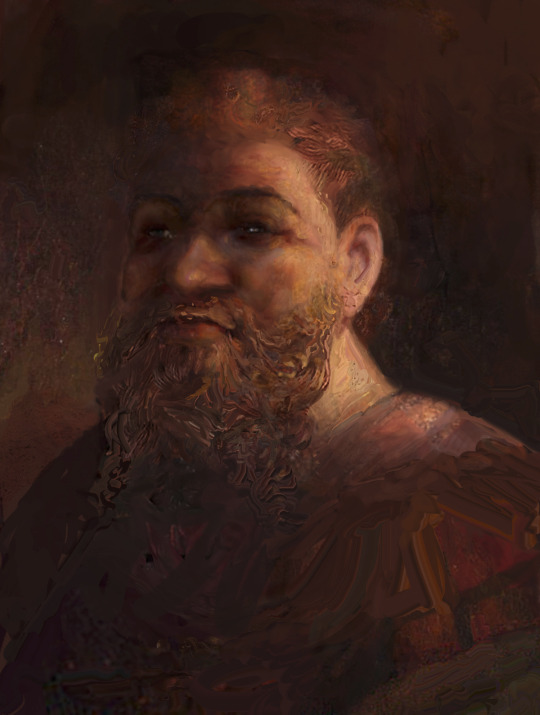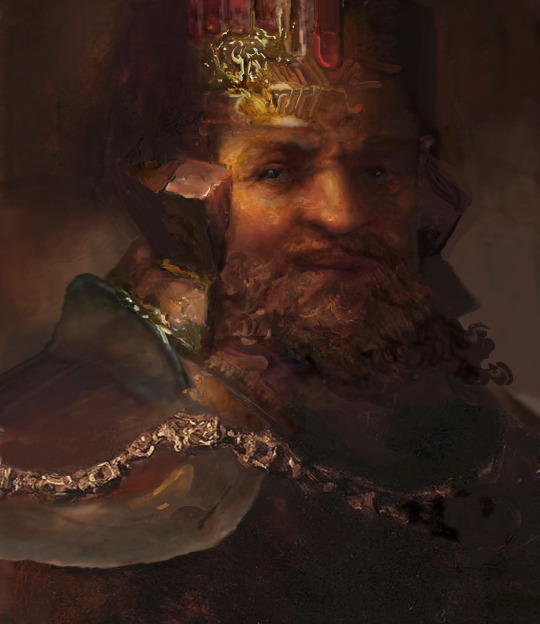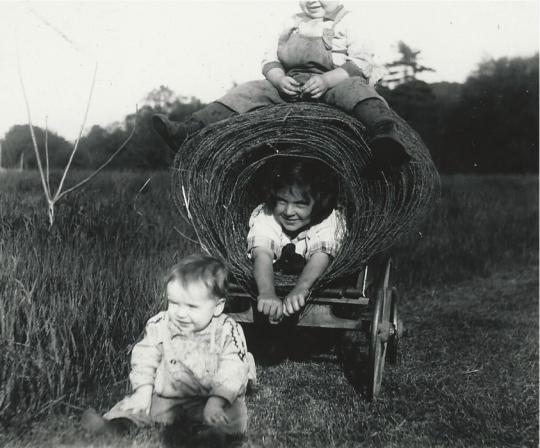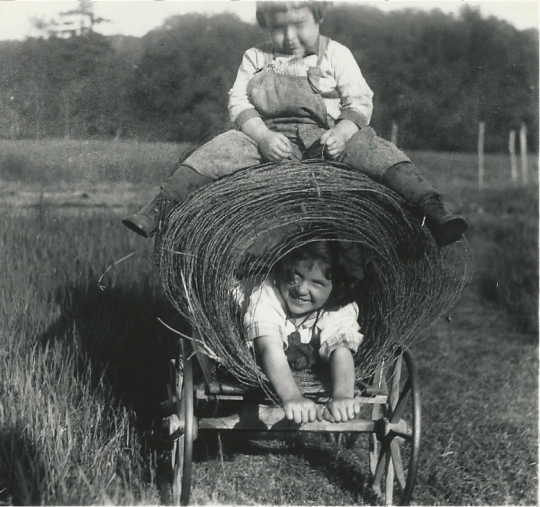#Abel Storrs
Explore tagged Tumblr posts
Text














william e. stafford, "brother" | sophocles, antigone (tr. f. storr) | david kaczynski, "missing parts" | igor levchenko, bhelen aeducan, prince of orzammar I | | stefano rebeggiani, "theban myth in virgil's aeneid: the brothers at war" | "missing parts" | wikipedia, "cain and abel" | cormac mccarthy, the sunset limited | "missing parts" | igor levchenko, bhelen aeducan, prince of orzammar II | john steinbeck, east of eden | virgil, the aeneid (qtd. stefano rebeggiani, "theban myth in virgil's aeneid: the brothers at war") | "brother"
#dragon age#bhelen aeducan#house aeducan#web weaving#went a little crazy this afternoon#the david k essay is really worth a read. felt kind of bad pulling it for something this frivolous but i think about it whenever i#think about brothers. he describes feeling as if he was observing their relationship from the outside as part of a grandiose tragedy#and i think his brother may have felt that also considering how he attributes familial breakdown to prevailing modes of production in his#manifesto. idk the way they write about one another is so fascinating
168 notes
·
View notes
Photo


Birth: May 15, 1807 Lebanon, Grafton County, NH. Death: 1902, Lebanon, Grafton County, NH. Abel was born on the old homestead on May 15, 1807. Abel graduated from Kimball Union Academy and Rensselaer Polytechnic Institute. He became a professor of Geology, Mineralogy, and botany at that same institute. He was invited to fill prominent positions for which he was well qualified; he declined these positions and came home and cared for his parents who were in declining years. Abel married 1st: Sarah Almira Storrs (2nd cousin) of Argyle, NY on 9.9.1839; she died June 3.1840. He married 2nd: Eliza Charlotte Hoyt, who was born in Craftsbury, VT. They had 3 daughters. Their daughter Nellie married A.W. Townsend, her classmate at Kimball Union Academy; and a graduate of Dartmouth College. He was a successful lawyer in Iowa. Mr. Townsend helped Abel Storrs in his declining years. From "The Granite State Free Press", 1902.
The above was taken from Find a Grave.
The diaries of Abel Storrs show that even with relatively low-maintenance sheep as his farm's main stock, there was plenty of work to keep Mr. Storrs and a few hired men busy through the course of the common fifteen-hour workday. Depending on the season they plowed, furrowed, planted, weeded, hoed, hauled rocks, spread manure, split rails and chopped wood, hauled more stone (a necessity if you wanted to plant anything in that rock-strewn soil), built stone walls with the rocks they hauled, mowed, mended fences, husked corn, tapped maples, boiled sap, picked apples, and cut and hauled hay. There were also cows to be milked, an assortment of other animals to be fed, and harvesting to be done when the crops were ready. Planted in the Storrs' fields were wheat, corn, oats and potatoes, all in quantities large enough to yield a surplus that could be sold. Peas, cabbage, beets, carrots, parsnips, and several kinds of beans were grown for family consumption. (Carroll, Roger, Lebanon 1761 - 1994: the evolution of a resilient New Hampshire city).
Abel Storrs got hit in the eye with a buggy shaft while unhooking the horse, and lost his eyesight in one eye. He lost sight in the other eye at about age 75. Since he lived til 95+, he was blind the last 20 years. (Info from Arthur Clark)
0 notes
Text
Chat from Thursday, May 23rd, 2019 — 9:30 A.M.
Ty: Yo so are you still playing the open mic nights in New Haven?
vro: Nah, i’ve been reframing my approach by taking into consideration the hypothetical of getting signed, since i was in talks w viacom + flirting w a potential connect to RCA earlier this year. Looking at drake, meek mill lil uzi, or the weeknd u see artists whose brands organically arose as seeds from one city wherein the energy for them was like, the most— meek n uzi have philly, drake n abel have toronto, and when they’re all there ppl freak the fuck out
vro: Ye after about five months of two nights a week i realized that new haven isn’t/can’t be my city
vro: Mostly b/c of a lack of quality recording opportunities, the complete lack of industry, lack of precedence for a new act to arise— all opportunities for a new brand are pretty much shit b/c the open mics are filled w other musicians that are attention-starved and relatively trash. Venues are optimized for acts that already have a following. Not a good city to build one
vro: Believe it or not storrs had more industry and larger turnouts for small-scale acts when i was there; more of an eagerness for the development of a counterculture (b/c everybody’s looking for something exciting to be a part of), plus a studio im already tight with
vro: But I’m always going back n forth on that— seems like the best bid for a “hometown”, best place to be known at, best place to at least record some shit to accrue some influence online, but sometimes i wonder if i should just bite the bullet and be a starving artist in a city like a lot of acts
vro: The argument’s there that it would be cheaper, maybe. Spend pretty much every day thinking about this stuff, trying to go the way that saves the most time
vro: But ye don’t do open mics anymore. Got what i needed from em, figured out what didn’t work, got the reference experiences n rewrote all of my compositions. The sound is way more autonomous/predicated on solo guitar than it was before. Hoping I’m finally at the final draft w/ a crazy enough sound to pull a weeknd, release some tracks that can rival what people normally r listening to + make a city go fuckin crazy. There’s an approach to the acoustic electric guitar that can manifest that; Dylan did it; but for a new age, n seeking it is like chasing moby dick, but it’s possible. Just hasn’t been done yet
vro: When Eazy-E dropped Cruisin in my ‘64 it like fundamentally changed what people expected from music, and ushered in the modern era of hip hop
vro: Lifestyle rap about niggas in the hood, which made everybody freak tf out
Basically the goal, to be a force that fundamentally changes how people engage culture/see music/engage music
vro: So its not just nuance in guitar compositions, ive been writing a concept album(s); been laying the foundation for it since 2017. Only releasing 2 singles to start tho, ready to go back to the drawing board if it’s still not good enough/where i want it
vro: But either way, the way i see it, people are going to look at the instrument differently by the time I’m done with it— only question is will i be the niche or the rule.
0 notes
Text
Group 4: Draft Narrative & Item Checklist
Exhibition Proposal/ Draft Narrative: Last Tuesday, the class discussed proposals for various features of the exhibition that required collective decisions. Many proposals overlapped, such as the use of the “Skyscraper Gothic” book for source material of font, color scheme, and decorative motifs.
FLOW AND ORIENTATION: Most groups appeared to agree on the use of an “L-shape” wall, which would create a directional flow for the entire exhibit. The introduction section would use the inside space of the wall for their content, and they would also have the lobby, staircase, and elevator area to set the tone of the exhibition. The construction section would follow, which would then transition to the buildings section and then to replication. The buildings section would use the back wall of 201, as well as coordinate with construction in their space to create an appropriate transition. As most of our proposed objects are 2D, we can use both walls in the tight hallway to create an impactful visual experience.
MATERIALS: Paint will be required for the walls of the exhibition, including the constructed L-wall. The color of the walls will depend on each section, although our buildings section has discussed using a darker navy color for the walls. The temporary walls are familiar to the Fralin, and the museum may be able to reuse walls to construct the L-shape. Special lighting and technology for visual projections may also be necessary for the exhibition. The copy of the exhibition could be printed vinyl letterings which stick on to the walls, which the Fralin is using for their current exhibition.
COLOR: The colors from the “Skyscraper Gothic” book provide inspiration for the exhibition color scheme. The contrast between dark navy and bright white and yellow engage viewers and relate to technological advancements in skyscraper lighting of the period. Some considerations that were discussed in class are ensuring the color scheme will not be too bright and overwhelming, as well as ensuring it won’t clash with the terracotta tiles on the Fralin floor. The four main colors we envision using would be: navy, a grey/blue color, white, and bright yellow as an accent color. These colors feel engaging, modern yet appropriate for the period, and set the mood for the exhibit. This color scheme also draws inspiration from colors associated with skyscrapers.
LIGHTING: Using lighting to create visual effects will be an important part of the exhibition, as lighting in this period revolutionized the perception of skyscrapers and influenced the architectural design of the tops of buildings. Especially in the buildings section, we intend to use spotlight lighting to illuminate certain features. We would ideally like to use lighting to create a skyline.
FONTS: The class all supported the idea of using the font from the “Skyscraper Gothic” book cover as the title font for the exhibition. However, we will also use a more generic and legible font for copy throughout. Our group discussed using a more narrow, vertical, san-serif font to emulate the sleekness of skyscrapers. We liked “Nanum Gothic” and “Gothic A1” as the font families for copy.
Potential Checklist Items for Buildings Section:
As detailed in the “orientation” section of our draft narrative, we imagined organizing the items in the “buildings” section of the exhibit by the city where the building was located. The three major cities which disrupted architecture and revolutionized the perception of skyscrapers were New York, Chicago, and Detroit. While highlighting certain impactful buildings, we hope to emphasize the effect these buildings had on civic identity and national branding. In addition to 2D materials, we would like to use the building models. We also propose to use images and artifacts of other “copycat” buildings to transition from the buildings section to the replication section of the exhibit. The buildings section would also like to use the postcards to articulate the impact skyscrapers had on cities’ identity and branding.
New York: Woolworth and Radiator *Chystler, Empire State
· Wall Street, Arnold Ronnebeck.
· Buildings on West 35th St, Sherril Schell
· [Woolworth Building] [model] A.C. Williams & Co.
· Woolworth Bldg Souvenir model bank c. 1920
· Statue of Liberty with Woolworth Bldg Plaque
· Woolworth building from Manhattan Municipal building 1920 Anton Joseph Frederich Schutz
· Radiator Building and surrounding area 1926 Vernon Howe Bailey
· New and Old New York Dey Str lkg toward broadway 1938 with woolworth Carl Abel H.L. Wittemann
· Lower Manhattan 1908 Joseph Pennell
· The Skyscraper and the Hovel 1904 Childe Hassam
· Woolworth Building No. 28 John Marin
· Telephone Building lower manhattan John Marin
· Aerial view of Manhattan showing skyscrapers and high-rise buildings with the Hudson River in the background, Ilse Bing
· Woolworth Building, Washington Square, Jacob Vanderbilt
· The Woolworth through the arch, Joseph Pennell
· New York, Abraham Walkowitz
· An American Cathedral The Woolworth Building #10 from NY Series 1921, John Taylor Arms
· View of Midtown Skyscrapers
· American Radiator Building (at night) Samuel Gottscho
· American Radiator Building (interior) Samuel Gottscho
· American Radiator Building (exterior) Kenneth Clark (Sig. not legible)
· 40th st between 5th and 6th 1938 Berenice Abbot
· West St Building 1905 Cass gilbert
· Broadway and the Woolworth Building 1912 J Pennell
· Woolworth Tower in the clouds 1928, Fairchild Aerial survey
· Study for Woolworth building 1910, Cass gilbert
· Study for the Woolworth Building 1911, TR Johnson delineator
· America’s tallest tower 1914, John Marin
Chicago: Tribune, Skyline Views
· Tribune Tower, Chicago [model] /Tribune Tower Souvenir Model
· Palmer Shannon, Tribune Tower, (Ext.) Photograph
· Tribune Tower (Detail) Trowbridge Photographs (7 items)
· Tribune tower looking northeast photo 1931
· Chicago Skyline 1931 with Tribune Wrigley and several others Underwood & Underwood
· Downtown Chicago at Night 1930, Pacific and Atlantic Photo
· Tribune competition 1922 designed RY mine
· Tribune Competition 1922 designed RY Mine
· Chicago Tribune Building 1928-38, Philip H. Giddens
· Chicago Tribune Entry 1922, Ralph Thomas walker architect
· Fisher Building Chicago elevator grille 1895-6, Charles Atwood for Burnham & Co
· Chicago Board of Trade 1930-63, Hedrich Blessing firm collection photo by Trowbridge who died in 1936
· Model of Ceres c. 1930, John Storrs
Detroit: Guardian, Penobscot, Skyline, Union Trust Building
· Penobscot Noir 2003 printed 2005, Russ marshall
· Penobscot Building 1937 (photograph)
· Penobscot, Guardian and Buhl bldgs. 1974 William Rauhauser
· Watercolor of Detroit John Gelsavage
· Photo of construction site with Buhl, Guardian and Penobscot among others in background c. 1948 Tony Spina
· Detroit Skyline 1960 (photograph)
· Panoramic view of Detroit skyline 1931 (photograph)
· New Union Trust Building c1927, Charles Barker
· Doorway Union Trust c1927, Charles Barker
· Old and New Union Trust c1927, Charles Barker
· Lobby of the New Union Trust c1927,Charles Barker
· Downtown Detroit Enveloped in Fog 1936, Don Walker
· Penobscot Commemorative Medallion 1927
· [Buhl building and Detroit cityscape] Detroit Publishing Co
· Detroit, Michigan. Top of Detroit's city hall dwarfed by the modern Penobscot Building in the background 1942 Arthur Siegal
Replications:
· Series of Alfred Stieglitz photographs
· Postcards
· “The Way to Reach the moderns” brochure of 1920s
· Atlanta City Hall series of 7 images after 1933, HABS Survey photos
· Atlanta City Hall c 1920-50, Horydczak, Theodor
1 note
·
View note
Text
Hyperallergic: Nearly 80 National Academy Members Sign Letter in Support of Dana Schutz and ICA Boston
Installation view of Dana Schutz at ICA Boston (all photos by Dominic Deluque)
Members and members-elect of the National Academy of Art have expressed their support of the Institute of Contemporary Arts Boston (ICA) and its an current exhibition of recent works by Dana Schutz, which a group of protestors have demanded be cancelled. An open letter shared with Hyperallergic by artist Barbara Grossman and signed by nearly 80 artists and architects praised the ICA for refusing to “bow to forces in favor of censorship or quelling dialogue.” Among its signatories are Ed Ruscha, Dread Scott, Jack Whitten, Catherine Opie, and Kara Walker — the latter of whom posted a widely shared message earlier this year on Instagram in defense of Schutz and her contentious painting of Emmett Till. Schutz herself has been a member of the Academy since 2010.
Their letter responds directly to a six-page Google document penned two weeks ago by a group of Boston artists, activists, and community members. Addressed to curator Eva Respini and her team, it calls for the museum to “pull the show,” adding: “This is not about censorship. This is about institutional accountability.” Their demands are driven by Schutz’s painting of Till and its inclusion in the Whitney Biennial, for which they believe Schutz needs to be held accountable.
Installation view of Dana Schutz at ICA Boston
The portrait is not in the ICA’s show, a fact that the National Academy members emphasize. Open since July 26, the exhibition Dana Schutz continues through November 26.
Read the letter, in full, below:
August 3, 2017
As members of the National Academy, we would like to voice our unequivocal support for Dana Schutz, who was recently excoriated by a group of Boston artists who were demanding that her current exhibition at the ICA in Boston be canceled, a demand meant to penalize Schutz, the artist behind Open Casket, a controversial painting featured at the 2017 Whitney Biennial, which draws on the well-known photograph of Emmett Till lying disfigured in his casket.
This painting is not included in the ICA exhibition.
As fellow artists and architects, we wholeheartedly support cultural institutions like the ICA-Boston who refuse to bow to forces in favor of censorship or quelling dialogue.
It is also of the utmost importance to us that artists not perpetrate upon each other the same kind of intolerance and tyranny that we criticize in others.
We support the ICA-Boston and its decision to exhibit the works of Dana Schutz, and to maintain programming that fosters conversations between people with different points of view, especially given our current political climate of intolerance.
Sig Abeles, NA
Marina Abramovic, NA-Elect
Stan Allen, NA
Polly Apfelbaum, NA
Dotty Attie, NA
Judith Bernstein, NA-Elect
Robert Birmelin, NA
Willard Boepple, NA
Richard Bosman, NA
Gregory Botts, NA
Pau Broches, NA-Elect
Henry Casselli, NA
Walter Chatham, NA
Chuck Close, NA
William Clutz, NA
Lisa Corinne Davis, NA-Elect
Donna Dennis, NA
Jane Dickson, NA
Rackstraw Downes, NA
Jackie Ferrara, NA-Elect
Louise Fishman, NA
Andrew Ginzel, NA
Jacqueline Gourevitch, NA
Philip Grausman, NA
Barbara Grossman, NA
Richard Haas, NA
Nancy Hagin, NA
Ann Hamilton, NA
Walter Hatke, NA
Julie Heffernan, NA
Nona Hershey, NA
Diana Horowitz, NA
David Humphrey, NA
Valerie Jaudon, NA
Roberto Juarez, NA
Harriet Korman, NA
Joyce Kozloff, NA
Tuck Langland, NA
Pat Lasch, NA
Jonathan Lasker, NA
Mel Leipzig, NA
Alfred Leslie, NA
James McGarrell, NA
Melissa Meyer, NA
Raoul Middleman, NA
John Moore, NA
John Newman, NA
Catherine Opie, NA-Elect
Tom Otterness, NA
Anthony Panzera, NA
Philip Pearlstein, NA
Judy Pfaff, NA-Elect
Ed Ruscha, NA-Elect
Joseph Santore, NA
Peter Saul, NA
Dread Scott, NA-Elect
Annabelle Selldorf, NA
Arlene Shechet, NA
Laura Shechter, NA
Cindy Sherman, NA-Elect
James Siena, NA
Elena Sisto, NA
Richard Sloat, NA
Joan Snyder, NA
Gary Stephan, NA
Jessica Stockholder, NA
Immi Storrs, NA
Altoon Sultan, NA
Barbara Takenaga, NA
Claire Van Vliet, NA
Don Voisine, NA
Kara Walker, NA-Elect
Susan Jane Walp, NA
Sharon Wandel, NA
Leslie Wayne, NA
Stephen Westfall, NA
Jack Whitten, NA-Elect
The post Nearly 80 National Academy Members Sign Letter in Support of Dana Schutz and ICA Boston appeared first on Hyperallergic.
from Hyperallergic http://ift.tt/2vphs8R via IFTTT
0 notes
Photo

“Mrs. Abel Storrs, all set to go to town again, visit Fred Carter’s house, 14 School Street, Lebanon, next to Methodist Church” . Maiden name: Elizabeth (Eliza) Charlotte Hoyt
0 notes
Photo



Pic 1: "Abel Storrs Townsend" I believe Storrs dropped out of high school not long after this was taken. He once told me to stay in school and not drop out as he had done. I was in college at the time. -Jean
Pic 2: "Storrs Townsend 1935-36"
Pic 3: Storrs used to live in the little house his father had placed on the property where he also built a garage for Storrs to had his business in. The house did not have a cellar or much of a foundation but was moved from another location and set on something like beams. Storrs lived there for a while then moved into the garage and later into a trailer of the type used by vacationers. I forget which he did first. He had a dog while living in the garage, where he also had an office. After he moved out of the house he let Jamie, a single mother he befriended, live there with her children. They used to catch the school bus there. Storrs was helpful in that kind of way to many of the needy in Lebanon, often repairing their cars without charging for his labor and even buying parts for him. Storrs did not pay taxes and was fearful of applying for social security, but when Alma and Arthur found out they applied for him (he hadn't made enough money, probably, to have had to pay taxes on anyway). I think he was 70 or close to it before he received SS benefits. - Jean
0 notes
Photo




Pic 1: "Mrs. F. V. A. Townsend mother of Amasa”. Aurelia K. Royce (1831-1906) m 1851. Pic 2: "First wife of Abel Storrs" Sarah Almira Storrs. She was his 2nd cousin. born 4/25/22, married 9/9/39, died 6/2/40. Married 9 months; may have died in childbirth. - Jean Pic 3: Back of photo has several notes: "Eliza Charlotte Hoyt married Abel Storrs" "My grandmother P.N.T." Eliza Charlotte Hoyt" "on Meridan Road" "Her brother George in North army died of scurvy in war prisoner camp on an island." She was Abel's second wife (b 11 Dec 1831 Mansfield, CT, married: 18 May 1851 in Hartland, VT). She got married at 19 to a man 24 years older than she was. Abel Storrs (1807 - 1902) would have been 44 — "was old enough to be her father. “
Pic 4: Clearly the same woman as in pic 3.
0 notes
Photo


Pic 1: Looks like Storrs home after the porch was added.
Pic 2: "Abel Storrs far before his grandson Harry Townsend added the porch. Storrs Hill, Lebanon, NH" Harry was his son. His grandson was Howard. I don't know which part of this caption is wrong. - Jean
0 notes
Photo





Pic 1: Philip Townsend at a grave of Nathaniel Storrs, his great-great-grandfather. Here is more info about him. Pic 2: Looks like Philip, Mabelle, Marie, & Hugh Townsend. Pic 3: Looks like Philip & Martin Townsend. The woman may be Martin's wife, but looks a bit like Ruth Townsend, the wife of Martin's brother, Norman. Pic 4: "Hugh Townsend" I remember hearing about a trunk full of old clothes in the attic of the Storrs place that included a Union Army uniform. This isn't it. - Jean Pic 5: "Hugh Townsend, son of Nellie S. Townsend, grandson of Abel Storrs"
0 notes
Photo





Pic 1: "June 2, 1947" unknown person visiting unknown relative/ancestor's grave Pic 2: "Sept 10, 1972 P.N. Townsend". The young lady is Barbara Bottomly before she married Richard Clark. Pic 3: P.N. Townsend sitting behind the counter at Honey Gardens Health Food Store, Lebanon, NH. The door behind him goes to the apartment in the back and over the store where he and Mabelle lived. Pic 4: P.N.T. at the grave of his great-great-grandfather, Nathaniel Storrs. Nathaniel served in the Revolutionary war but I can find out anything about his service. His gravestone is marked as a veteran of the Revolutionary war. Here is more info. Pic 5: P.N. Townsend and his son Abel Storrs Townsend at the grave of ancestor Abel Storrs. Abel Storrs was PNT’s maternal grandfather and is who his son was named after. Here is more info about him.
0 notes
Photo

b. 1752, d. 1828. great uncle of Abel Storrs. Abel Storrs was the maternal grandfather of Philip Townsend. Abel Storrs’ father was also named Constant, which can be confusing.
0 notes
Photo





1st: “A. Storrs Townsend, Alma in roll of wire, Ira on top” Alma was the oldest and Abel Storrs Townsend the youngest.
2nd: Ira and Alma.
3rd: Alma.
4th: "Alma D. Townsend Clark, Honey Gardens, Lebanon, N.H. born Jan 13, 1918"
5th: "Ira P. Townsend (born 1920) Alma D. Townsend Clark (born 1918"
0 notes